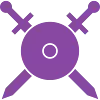Пераклад гэтай гульні на вашу мову няпоўны (неперакладзены тэкст адлюстроўваецца на англійскай). Вы можаце дапамагчы
ў цэнтры перакладаў.
Згуляйце ў medina і 1045 іншых гульняў онлайн.
Без запампоўкі, проста з вашага браўзэра.
З вашымі сябрамі і тысячамі гульцоў з усяго свету.
Гуляйце бясплатна.
Апошняе абнаўленне
Dear players, a new arena season has started and some options changed for Medina:
| Previous season | New season |
|---|
| Number of players | 2 | 3 |
Глядзець больш

Кінь выклік
лепшым гульцам свету
Стань наступным чэмпіёнам
medina
[fr]
Règles vidéo Ludochrono
Інфармацыя аб гульні
Дызайнер
Мастак
Eduardo Bera, Hans-Georg Schneider
Рэдактар
Год
Распрацавана
Колькасць згуляных гульняў
Колькасць гульцоў
Працягласць гульні
Складанасць
Стратэгія
Удача
Узаемадзеянне
Даступна з
Версія
العربية
беларуская мова
български език
Brezhoneg
Català
čeština
Dansk
Deutsch
Ελληνικά
English
Español
Eesti keel
فارسی
Suomi
Français
Galego
עברית
Hrvatski
Magyar
Italiano
Bahasa Indonesia
日本語
한국어
Lietuvių
Latviešu
Bahasa Malaysia
Nederlands
Norsk
Polski
Português
Română
Русский язык
Slovenčina
Slovenščina
Српски
Svenska
ไทย
Türkçe
Українська мова
Tiếng Việt
中文 (漢)
中文 (汉)



